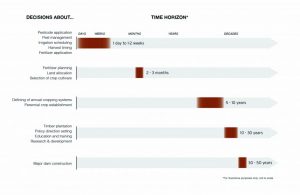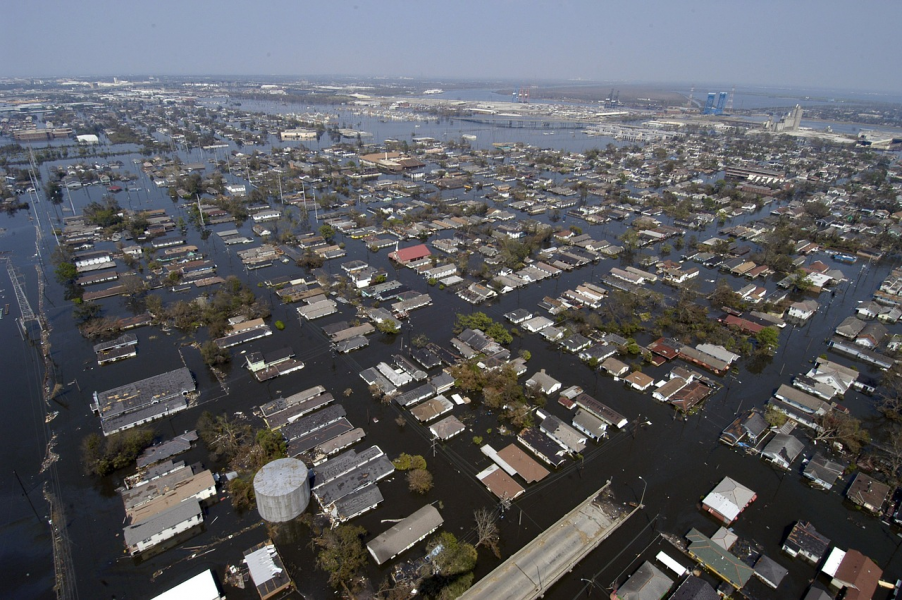Climate resilience is increasingly prioritized by international development agencies and national governments. To this end, recent years have seen an escalating demand for information about the future impacts of climate change to guide climate resilience efforts in development practice. The growing demand has been met by a proliferation of climate change information products—data portals and analysis tools—and by services that rely on climate model output to guide decision making at national and even local scales. An informed user community is imperative to navigate this rapidly-growing market of climate change information products, and to make informed demands of climate information providers.
In WIREs Climate Change, scientists at Columbia University’s International Research Institute for Climate and Society and the Red Cross Red Crescent Climate Centre review the evidence on the suitability of climate change projections for use in decision making, including those products developed with the explicit goal of informing adaptation. Worryingly, they caution that current practices in international development are not making use of the best available scientific knowledge to guide development practice.
Within international development programs, projects often rely on climate model projections of expected changes several decades ahead. This predominant focus on end-of-century projections constitutes a serious opportunity cost for the limited financial and human resources available to tackle development challenges. Resources are urgently needed to address more immediate problems in development, such as building resilience to climate shocks and stressors and developing early warning systems and seasonal adaptation plans. In fact, in many situations this approach is also the best protection against future trends, which will be felt through changes in the frequency and intensity of extreme weather and climate events. This observation is particularly relevant in developing countries where vulnerability to today’s climate is already high and adaptive capacities are lower than in more industrialized nations.

There are, of course, situations where a longer-term view is needed. In addition to energy policy, examples include infrastructure projects, such as irrigation reservoirs, coastal development and flood defenses, and other long-term investment and planning. Research on longer-term climate change also helps shape policy priorities by influencing the discourse around resilience and can cast shorter-term decisions in the context of underlying trends.
However, even when long-term information really would be relevant for decision making, the authors warn that the use of climate change projections for detailed planning stretches the models beyond their capabilities. An inflated demand for and supply of highly localized projections for specific dates in the future is leading to a proliferation of poor-quality information. While climate model projections are able to capture many aspects of the climate system and so can be relied upon to guide mitigation plans and broad adaptation strategies, the use of these models to guide local, practical adaptation actions is unjustified. In particular, projections cannot be relied upon at local scales (for particular project sites or areas of a country). Nor can they be used to align adaptation plans with the timing of particular outcomes or thresholds predicted by the models (for example by extracting model projections for the 2040s). Practitioners would often like to know the probabilities of different climate futures, but the climate projections were never intended to give accurate probabilities – yet they are often presented as if they do. This practice gives a false impression of confidence to those who seek to act on climate change information.
Where do we go from here?
Addressing two communities of practice: development practitioners and scientists providing climate change information for adaptation, the authors propose practical solutions that aim to redirect both the demand for and supply of climate change information where it is most reliable and can usefully be applied. Solutions to mobilize the best available science include a focus on decision-relevant timescales, a greater role for targeted model evaluation before disseminating information from models and the integration of climate variability into climate change services. In Uruguay, for example, future climate variability was stochastically simulated around projected trends to estimate agricultural risks (Greene, Goddard, Gonzalez, Ines, & Chryssanthacopoulos, 2015).
Climate services can facilitate robust adaptation, and there is a growing roster of examples of the effective use of climate information in development. Rather than designing adaptation strategies around climate projections, these projects begin with the adaptation options available and assess the sensitivities of these strategies to plausible changes in climate. A recent report on the World Health Organisation’s long-term malaria eradication strategy proposes the integration of climate and health surveillance systems to enable better management of fluctuations in malaria risk, and a flexible long-term strategy that can reviewed periodically to incorporate new information about climate change and its impacts on malaria (Nissan, Ukawbua, & Thomson, 2017).
Other innovative approaches involve sensitivity analyses to explore the impacts of uncertainty in future climate on decisions. In the late 1990s and 2000s, Australia experienced prolonged droughts, and water managers faced decisions over whether to augment water supplies and impose demand restrictions. These decisions depended on the likelihood that the recent droughts might be symptomatic of a longer-term drying trend resulting from climate change, and therefore may be liable to continue. In the absence of robust methods to quantify this likelihood, analyses were conducted to determine the impacts of different plausible future climate scenarios on the available adaptation options. The sensitivity of the analyses was tested against different probability weightings for each scenario (Dessai, Lu, & Risbey, 2005). Further scientific clarity is simply not possible, but such analyses can assist decision-makers to move forward in full awareness of the uncertainties involved.
Dessai, S., Lu, X., & Risbey, J. S. (2005). On the role of climate scenarios for adaptation planning. Global Environmental Change, 15(2), 87–97.
Greene, A. M., Goddard, L., Gonzalez, P. L. M., Ines, A. V. M., & Chryssanthacopoulos, J. (2015). A climate generator for agricultural planning in southeastern South America. Agricultural and Forest Meteorology, 203, 217–228.
Nissan, H., Ukawbua, I., & Thomson, M. (2017). Factoring climate change into the malaria eradication strategy of the World Health Organisation. Report for the Strategic Advisory Group on Malaria Eradication.
Kindly contributed by the Authors.

















